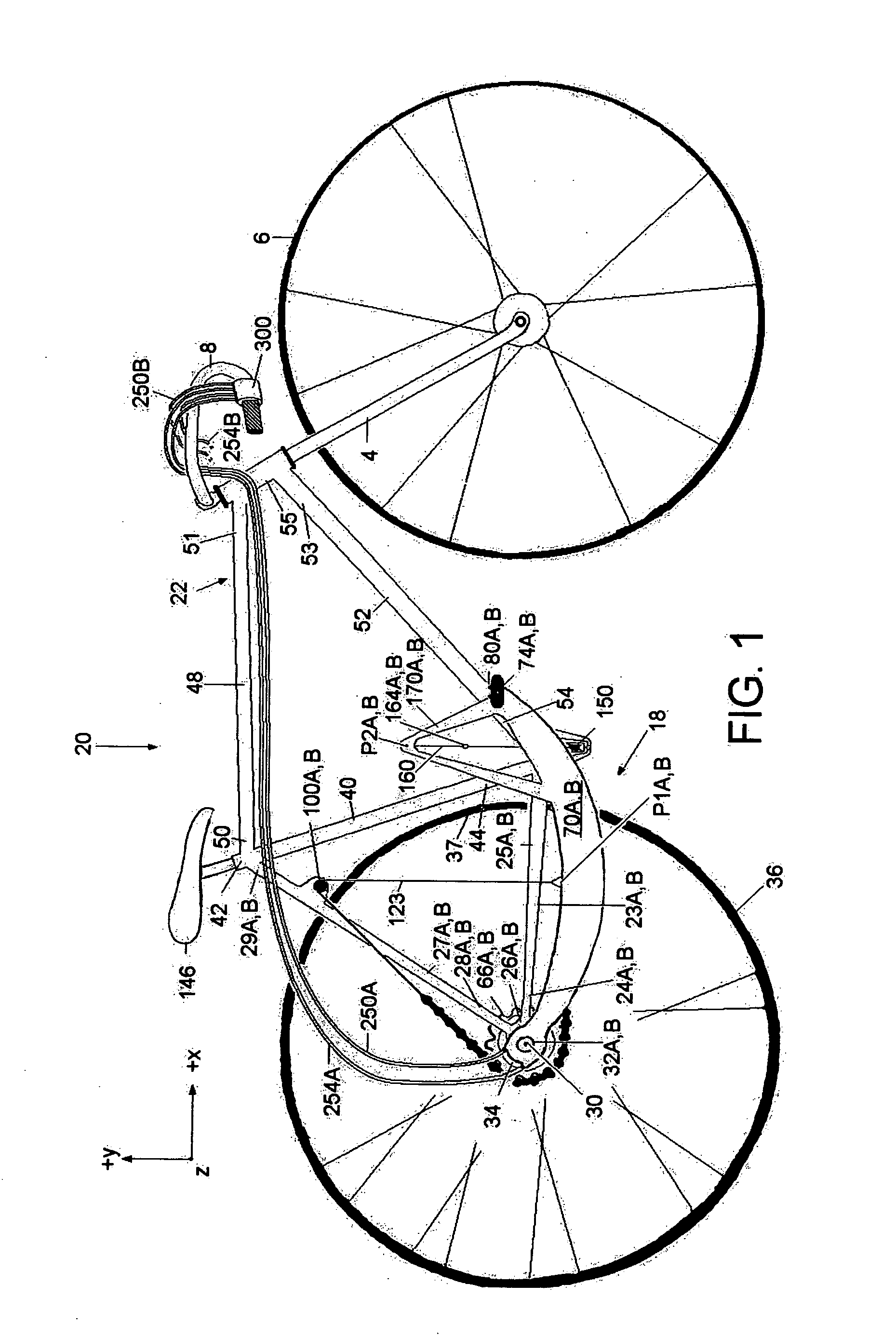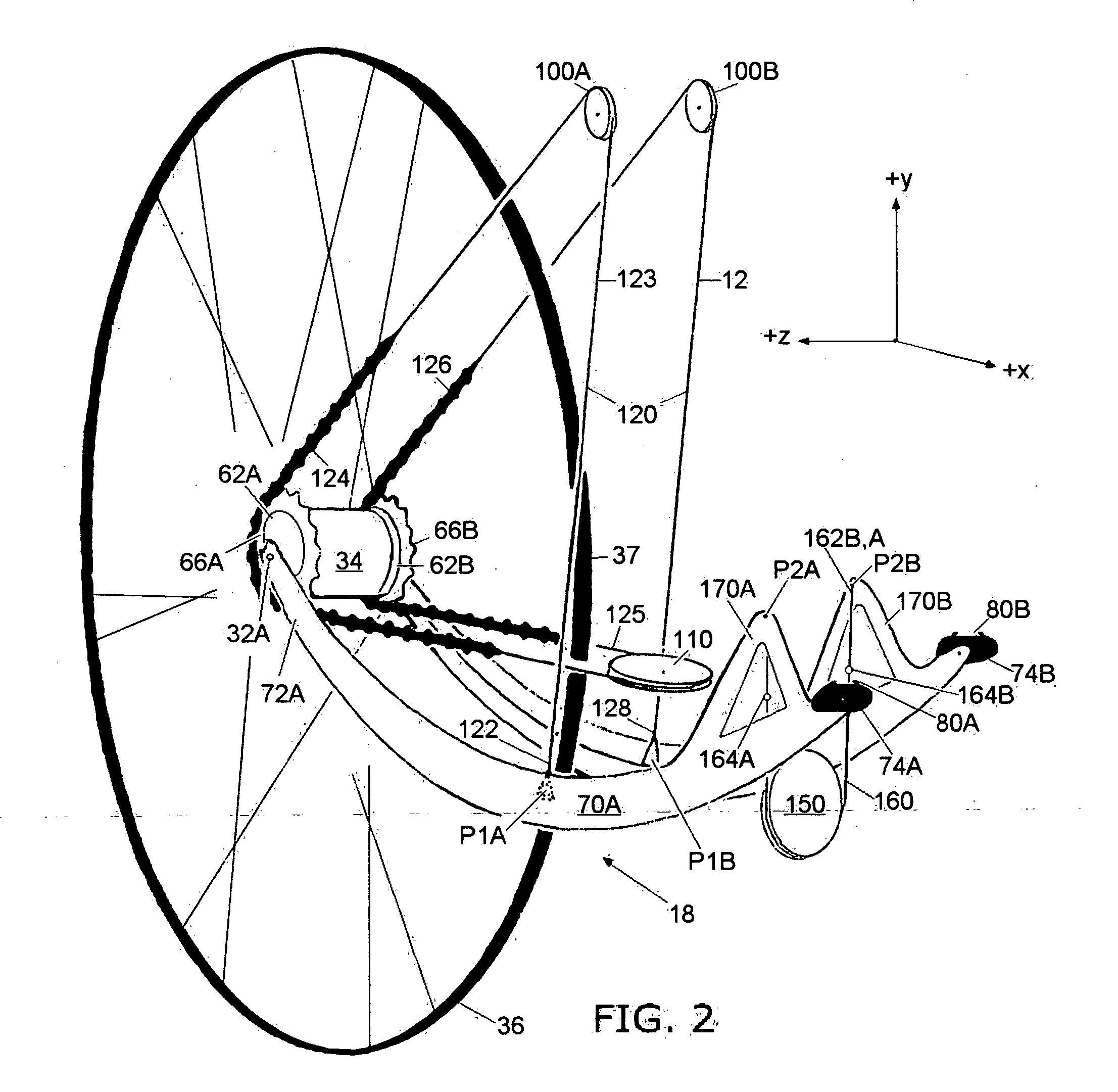Muscle-powered continuously variable drive system and apparatus having same
a drive system and muscle technology, applied in the direction of rider propulsion, vehicle components, transportation and packaging, etc., can solve the problems of excessive mechanical complexity of muscle-power drive systems, weight and mechanical efficiency penalties, etc., and achieve the effect of better use of leg muscle power
- Summary
- Abstract
- Description
- Claims
- Application Information
AI Technical Summary
Benefits of technology
Problems solved by technology
Method used
Image
Examples
Embodiment Construction
[0021]FIG. 1 is a side elevational view of an example embodiment of a muscle-powered drive system (“the drive system”) 18 of the present invention as incorporated into a bicycle 20. An X-Y-Z Cartesian coordinate system is shown in for the sake of reference, wherein “vertical” is in the Y-direction, and horizontal is in the Z- and X-directions. Also, “front” is associated with the +X direction, the “back” is associated with the −X direction, the “top” or “up” is associated with the +Y direction, the “bottom” or “down” is associated with the −Y direction, the right-hand side is associated with the +Z direction, and the left-hand side is associated with the −Z direction. Also, “horizontal” means in or substantially in the X-Z plane, while “vertical” means in or substantially in the Y-Z plane. Thus, “vertical” and “horizontal” are intended to generally indicate relative orientations.
The Frame
[0022] Bicycle 20 has a frame 22 that is aligned substantially in the X-Y plane. Bicycle fram...
PUM
 Login to View More
Login to View More Abstract
Description
Claims
Application Information
 Login to View More
Login to View More - R&D
- Intellectual Property
- Life Sciences
- Materials
- Tech Scout
- Unparalleled Data Quality
- Higher Quality Content
- 60% Fewer Hallucinations
Browse by: Latest US Patents, China's latest patents, Technical Efficacy Thesaurus, Application Domain, Technology Topic, Popular Technical Reports.
© 2025 PatSnap. All rights reserved.Legal|Privacy policy|Modern Slavery Act Transparency Statement|Sitemap|About US| Contact US: help@patsnap.com



